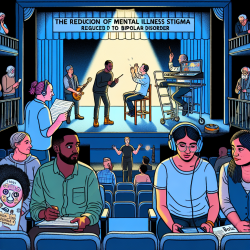Introduction
In the realm of special education, understanding the intricate relationship between face scanning and language acquisition can significantly enhance the effectiveness of interventions for children with neurodevelopmental disorders. A recent study titled Concurrent Relations between Face Scanning and Language: A Cross-Syndrome Infant Study sheds light on how visual attention patterns can influence language development across different syndromes. This blog explores the findings of this study and provides insights on how practitioners can leverage these outcomes to improve their skills and encourage further research.
The Study and Its Findings
The study investigated the face-scanning patterns of infants and toddlers with Down syndrome (DS), fragile X syndrome (FXS), and Williams syndrome (WS), comparing them to typically developing (TD) controls. Using eye-tracking technology, researchers measured visual attention to determine how these patterns relate to language ability.
Key findings include:
- TD Controls: Children with a larger vocabulary tended to fixate more on the mouth region of incongruent faces, suggesting that visual information from mouth movements enhances language acquisition.
- FXS and WS: Contrary to expectations, children with these syndromes who had larger vocabularies focused more on the eyes rather than the mouth, indicating different learning strategies.
- DS: In this group, fixation on the overall face rather than specific features predicted vocabulary size, highlighting a unique approach to language learning.
Implications for Practitioners
The study's findings suggest that practitioners should consider syndrome-specific interventions that focus on optimizing face-scanning behaviors. Here are some strategies to implement:
- Customize Interventions: Tailor interventions to focus on enhancing mouth gaze in TD children, while encouraging eye contact in children with FXS and WS.
- Incorporate Technology: Utilize eye-tracking technology in assessments to better understand individual face-scanning patterns and adapt teaching methods accordingly.
- Early Intervention: Emphasize early intervention programs that target efficient face-scanning behaviors, potentially leading to improved language outcomes.
Encouraging Further Research
This study opens the door for further research into the nuanced relationship between face scanning and language development. Practitioners are encouraged to explore the following areas:
- Longitudinal Studies: Conduct longitudinal studies to track changes in face-scanning patterns and their impact on language development over time.
- Broader Populations: Expand research to include a wider range of neurodevelopmental disorders to understand commonalities and differences in face-scanning strategies.
- Intervention Efficacy: Investigate the efficacy of different intervention strategies in modifying face-scanning behaviors and enhancing language skills.
Conclusion
The insights gained from the study on face scanning and language development offer valuable guidance for practitioners working with children with neurodevelopmental disorders. By implementing targeted interventions and encouraging further research, we can pave the way for improved language outcomes and a deeper understanding of the cognitive processes involved. To read the original research paper, please follow this Concurrent Relations between Face Scanning and Language: A Cross-Syndrome Infant Study.










